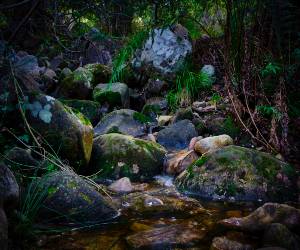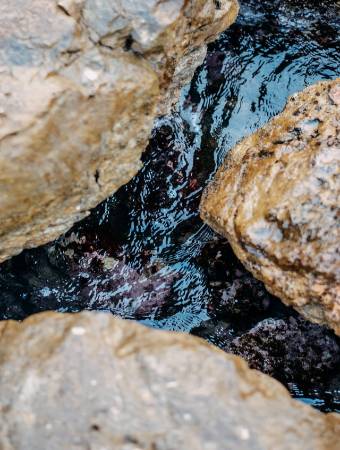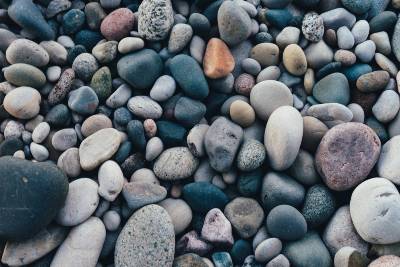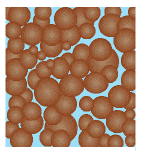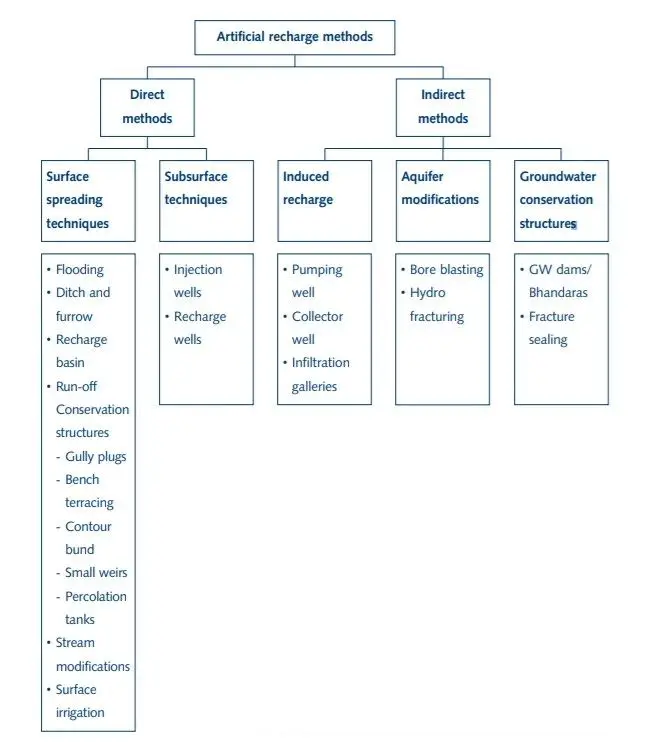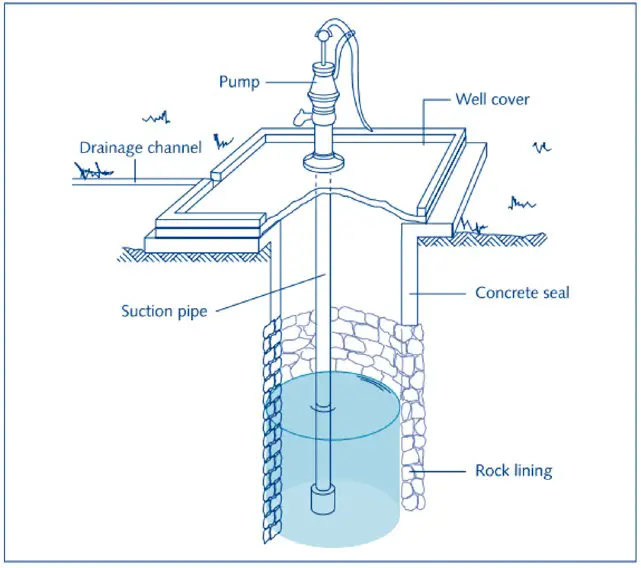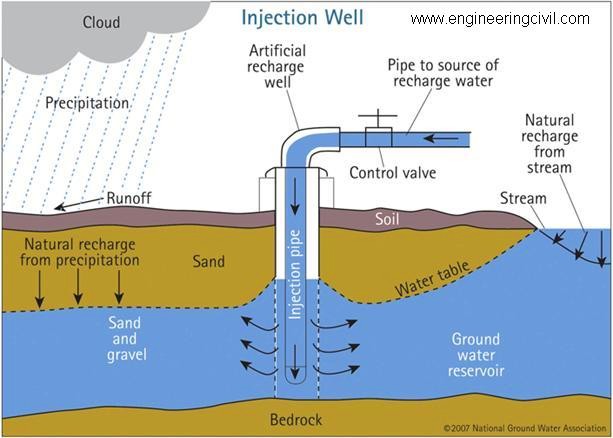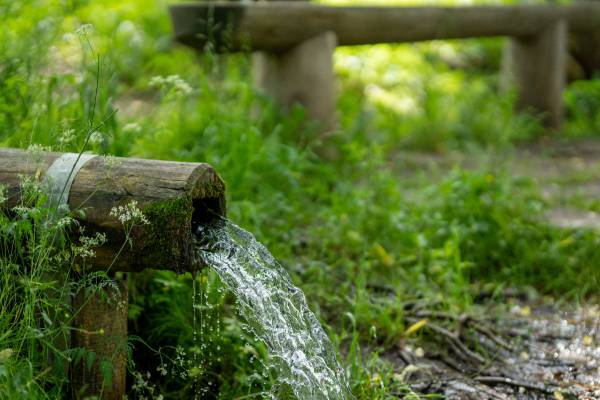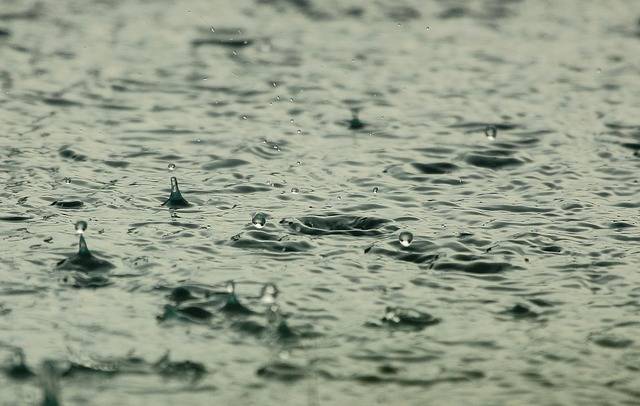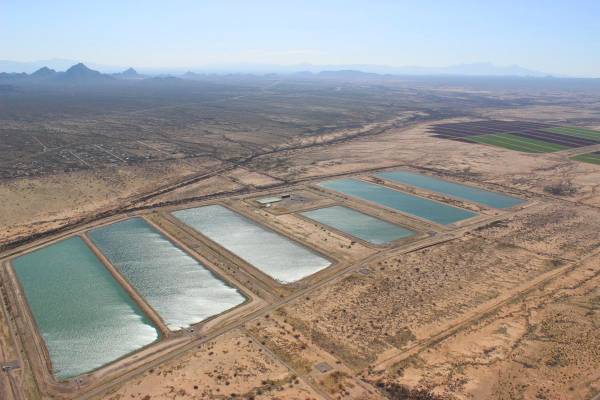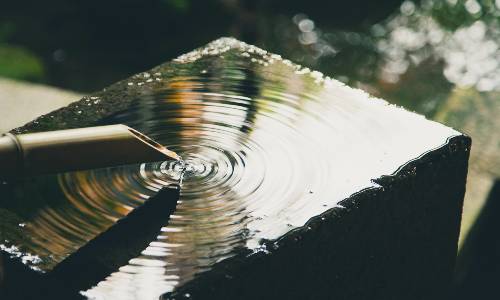
15 Difference and Similarities between Confined and Unconfined Aquifer
Differences and Similarities between Confined and Unconfined Aquifer
Compiled by Stanley Udegbunam || Dec 04, 2020
You can click on any listing in the table of content below to just straight at your area of interest.
Without further ado, let’s get started.
AFRILCATE
OVERVIEW OF AQUIFER
Aquifers are found in the area saturated with water.
They are the underground layers of rock that hold the groundwater.
Groundwater enters an aquifer as precipitates fall on the earth’s surface and seep through the soil.
The amount of time that groundwater remains in aquifers is called its residence time and it can vary widely from a few days or week to thousands of years.
There are two types of aquifers; Unconfined and Confined aquifer.
Using a tabular representation, let’s look at the difference between the aquifer type.
DIFFERENCE BETWEEN CONFINED AND UNCONFINED AQUIFER
| Differences | CONFINED AQUIFER | UNCONFINED AQUIFER |
|---|---|---|
| DEFINITION | It’s an aquifer with a layer of permeable material above it | This aquifer is overlain by layers of impermeable rock or clay. |
| AQUIFER FORMATION | Forms when water infiltrates the soil and percolates downward to the water bed over layers of porous and permeable materials. | Forms when water seeps between layers of impermeable rocks under the gradual influence of pressure and gravity. |
| SURFACE PROXIMITY | It occurs near the earth surface. | It generally occurs at significant depth below the earth’s surface. |
| CONTAMINATION | At a greater risk of contamination from external sources like rivers and from poorly managed human activities like septic leaks and excessive spray of pesticides and herbicides on farmlands. | The confining layer offer some protection from surface contamination. |
| RECHARGE RATE | Though aquifers take a long time to get recharged, the recharge rate is faster in unconfined aquifer. | Takes a longer time to get recharged. |
| ALTERNATIVE NAMES | Also known as water-table aquifer. | Popularly called Artesian aquifer. |
| SURROUNDING LAYERS | Usually guarded by an aquitard above it and an aquiclude below it. | Confined by an aquiclude above and below it. In rare cases, aquifuge is found below it. |
| FLOW RATE | Have a higher flow rate even when its retarded by an aquitard. | Have a lower flow rate due to the presence of impermeable linings. |
| HYDRAULIC CONDUCTIVITY | Higher hydraulic conductivity | Lower hydraulic conductivity |
| STORATIVITY LEVEL | Have storativities greater than 0.01 | Have storativities values much less than 0.01. |
| Differences | CONFINED AQUIFER | UNCONFINED AQUIFER |
|---|---|---|
| DEFINITION | It’s an aquifer with a layer of permeable material above it | This aquifer is overlain by layers of impermeable rock or clay. |
| AQUIFER FORMATION | Forms when water infiltrates the soil and percolates downward to the water bed over layers of porous and permeable materials. | Forms when water seeps between layers of impermeable rocks under the gradual influence of pressure and gravity. |
| SURFACE PROXIMITY | It occurs near the earth surface. | It generally occurs at significant depth below the earth’s surface. |
| CONTAMINATION | At a greater risk of contamination from external sources like rivers and from poorly managed human activities like septic leaks and excessive spray of pesticides and herbicides on farmlands. | The confining layer offer some protection from surface contamination. |
| RECHARGE RATE | Though aquifers take a long time to get recharged, the recharge rate is faster in unconfined aquifer. | Takes a longer time to get recharged. |
| ALTERNATIVE NAMES | Also known as water-table aquifer. | Popularly called Artesian aquifer. |
| SURROUNDING LAYERS | Usually guarded by an aquitard above it and an aquiclude below it. | Confined by an aquiclude above and below it. In rare cases, aquifuge is found below it. |
| FLOW RATE | Have a higher flow rate even when its retarded by an aquitard. | Have a lower flow rate due to the presence of impermeable linings. |
| HYDRAULIC CONDUCTIVITY | Higher hydraulic conductivity | Lower hydraulic conductivity |
| STORATIVITY LEVEL | Have storativities greater than 0.01 | Have storativities values much less than 0.01. |
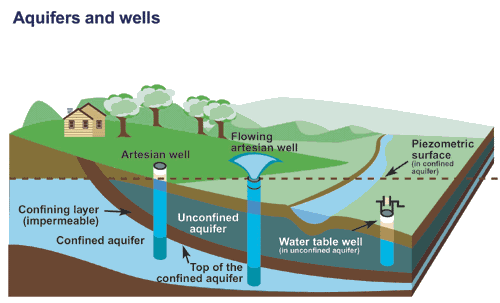
confined and unconfined aquifer
SIMILARITIES BETWEEN CONFINED AND UNCONFINED AQUIFER
The similarities between confined and unconfined aquifers are:
- They both have an underlying impermeable lining.
- Water flows through them by percolation
- They are found underground where they serve as a storage house for
- In cases when their water content is very low, they can both be replenished by artificial recharge
- The study of underground water flow in both unconfined and confined aquifer is known as hydrogeology
KEY TERMS
There are some basic key terms to know when talking about aquifers. They include:
- Recharge
- Artificial Recharge
- Storativity
- Hydraulic Conductivity
- Percolation
- Hydrogeology
Recharge is the process where surface water or precipitations infiltrates the soil and percolates downwards to the water table.
Groundwater Recharge is the primary method through which water enters the aquifer.
Learn more: Groundwater Recharge
Artificial recharge is the process of increasing the amount of water that enters an aquifer through planned, human-controlled means.
Groundwater is recharged either naturally or through artificial means.
The artificial means of recharging groundwater is employed when the rate of underground water consumption exceeds it’s natural rate of recharge.
There are various means of achieving artificial groundwater recharge and they are all documented in our explanatory guide.
Learn more: Artificial Recharge Guide
This is the volume of water removed from a unit area of an aquifer for a unit drop in hydraulic head.
This is the ease with which fluid moves through pore space and fractures.
It is different from permeability which relates specifically to the properties of the porous material only. Permeability doesn’t consider the property or the fluid type.
In contrast, hydraulic conductivity considers both the porous medium and the flowing fluid so it affected by the density and viscosity of the flowing fluid.
Percolation is the downward movement of water through soil layers due to gravity and capillary forces.
Percolation is an important process required to replenish aquifers that hold groundwater in the saturation zone.
The speed at which that water moves through different soil layers is known as percolation rate.
Structures known as percolation tanks are also designed for the purpose of groundwater recharge.
Learn more: All about Percolation
Hydrogeology is the study of the distribution, flow, and quality of underground water.
It is an aspect of geology and it’s also called groundwater-hydrology or geohydrology.
Hydrogeology maps and quantifies the water stored in underground aquifers and occasionally surface systems.
A practitioner of hydrogeology is called a hydrogeologist.
Learn more: Hydrogeology Study
Based on readers’ requests, we recently published an in-depth article on aquifer to give you an extended knowledge of the topic.
See it here: Aquifer – Meaning, Types and Importance
DO YOU KNOW?
This means it can take several thousands of years for underground aquifers to become replenished.
DO YOU KNOW?
Unlike surface water, groundwater can move as slow as a meter per year.
This means it can take several thousands of years for underground aquifers to become replenished.

